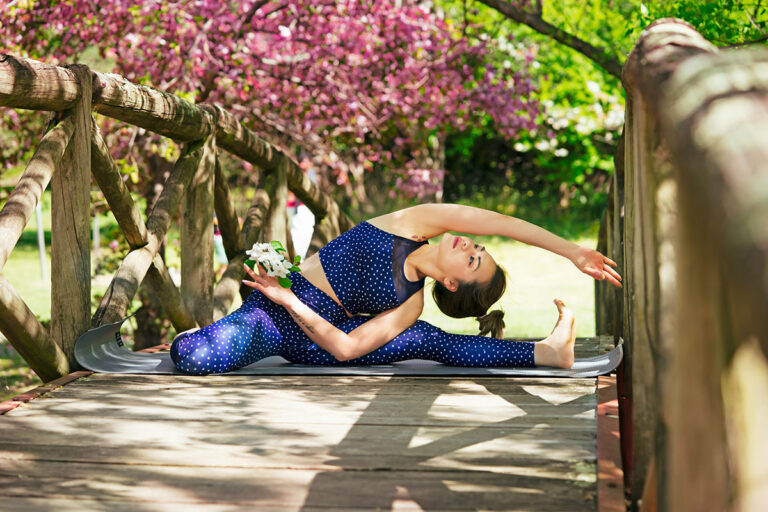Athletes are constantly pushing their physical limits—striving for peak performance, endurance, and strength. But optimal performance isn’t just built in the gym or on the field—it’s also cultivated on the mat. Yoga, once viewed as a fringe practice, is now a powerful tool in every serious athlete’s recovery and mobility toolkit.
From elite professionals to everyday sports enthusiasts, more athletes are turning to yoga to improve flexibility, prevent injuries, speed up recovery, and enhance mental focus. It’s not about sacrificing strength—it’s about building balanced, injury-resistant bodies and sharp minds.
🧠 Why Athletes Need Yoga
1. Corrects Imbalances
Many sports emphasize specific muscle groups (e.g., quads in running, shoulders in tennis), leading to muscle tightness and imbalance. Yoga helps realign the body through full-body movement and deep stretching.
2. Enhances Flexibility
Increased flexibility improves range of motion, allowing for smoother, more powerful movement and reducing the risk of pulls and strains.
3. Improves Recovery
Yoga boosts circulation, lymphatic drainage, and relaxation, helping muscles recover faster post-training or competition.
4. Prevents Injuries
Tight hips, hamstrings, and shoulders are a recipe for injury. Yoga keeps joints and connective tissue healthy, minimizing wear and tear.
5. Builds Mind-Body Awareness
Athletes who practice yoga develop greater control, concentration, and breath awareness, which translates to better decision-making under pressure.
🏋️♂️ How Yoga Complements Athletic Training
| Training Goal | Yoga Contribution |
| Strength | Supports stabilizer muscles and core engagement |
| Endurance | Enhances breath control (pranayama) and energy conservation |
| Agility | Improves joint mobility and dynamic balance |
| Mental focus | Calms performance anxiety and builds clarity |
| Recovery | Promotes active rest and tissue repair |
🔁 Best Times for Athletes to Practice Yoga
- Post-Workout Cooldown: Gentle stretches to release lactic acid and relax muscles
- Recovery Days: Use restorative or Yin yoga to promote healing
- Morning Mobility Routines: Wake up joints and muscles before training
- Pre-Event Warm-Ups: Use dynamic yoga flows to activate muscles
🔥 Yoga Poses Every Athlete Should Know
These poses focus on flexibility, balance, and recovery:
1. Downward-Facing Dog
Stretches hamstrings, calves, and shoulders while strengthening arms.
2. Pigeon Pose
Targets tight hips and glutes—a must for runners, cyclists, and lifters.
3. Low Lunge (Anjaneyasana)
Opens hip flexors and quadriceps—essential for explosive sports.
4. Reclining Twist
Improves spinal mobility and aids digestion after intense training.
5. Bridge Pose
Builds glute strength and supports the lower back.
6. Legs Up the Wall (Viparita Karani)
Relieves tired legs, reduces swelling, and calms the nervous system.
🧘♀️ Recommended Yoga Styles for Athletes
- Yin Yoga – Deep stretches targeting connective tissues
- Vinyasa Flow – Builds strength and endurance through dynamic movement
- Restorative Yoga – Gentle poses to activate the parasympathetic nervous system
- Hatha Yoga – Great for alignment and body awareness
- Yoga Nidra – Yogic sleep for mental recovery and deep rest
🧘♂️ Mental Benefits for Competitive Edge
Athletes often face high-pressure situations. Yoga enhances:
- Focus and presence on the field or court
- Emotional regulation under stress
- Visualization and breath control for improved performance
- Mental clarity for strategy and decision-making
🗣️ What Elite Athletes Say About Yoga
- LeBron James: Uses yoga to maintain longevity and mental clarity
- Tom Brady: Credits yoga and pliability work for extending his career
- Novak Djokovic: Incorporates yoga and meditation for focus and recovery
- Cristiano Ronaldo: Practices yoga to prevent injury and boost mobility
📅 Sample Weekly Yoga Plan for Athletes
| Day | Yoga Focus | Duration |
| Monday | Vinyasa (strength) | 30 mins |
| Tuesday | Yin (hip & hamstring) | 25 mins |
| Wednesday | Rest day – Legs Up Wall | 15 mins |
| Thursday | Hatha (alignment) | 30 mins |
| Friday | Restorative (recovery) | 20 mins |
| Saturday | Active Flow (pre-game) | 20 mins |
| Sunday | Yoga Nidra (rest) | 15 mins |
🧘 Final Thoughts
Yoga is not a substitute for training—it’s a performance enhancer and long-term investment in your athletic health. Whether you’re a weekend warrior, marathon runner, or pro athlete, yoga offers the flexibility, recovery, and mindfulness needed to keep pushing your limits—safely and sustainably.
“Strong muscles help you win races. A strong mind and body connection help you last a lifetime.”



